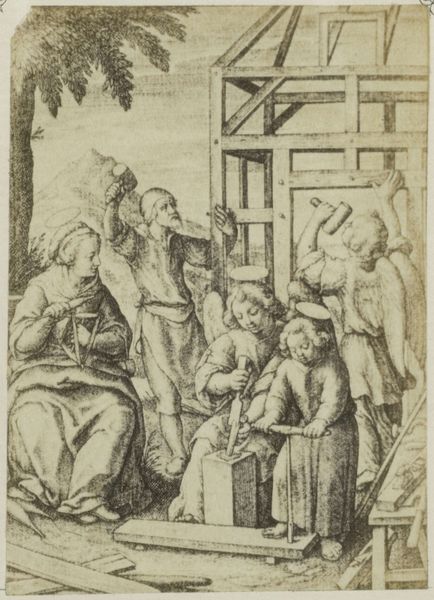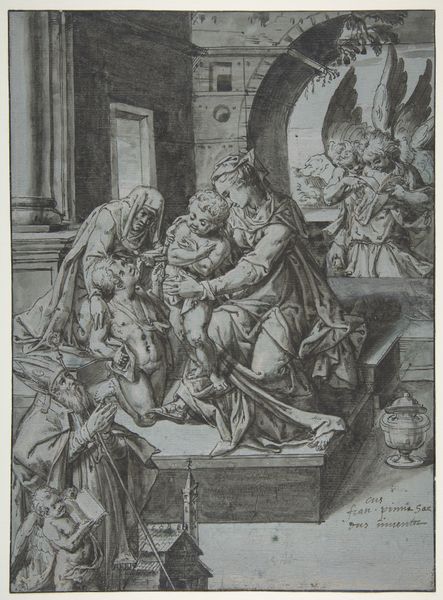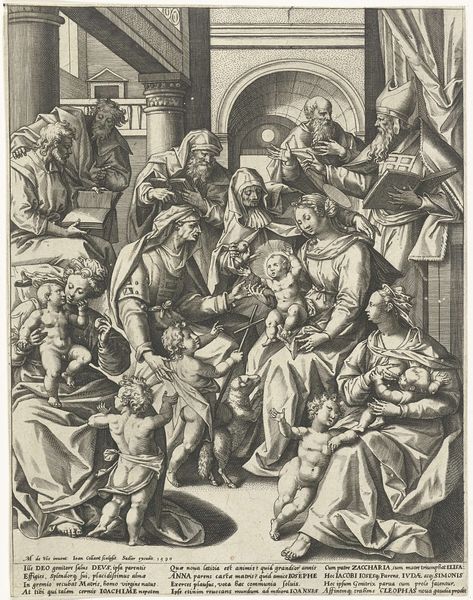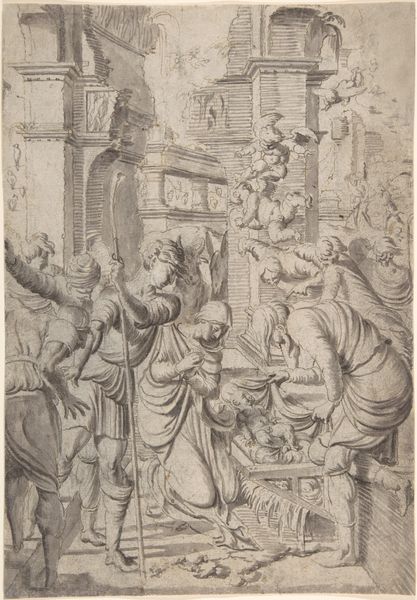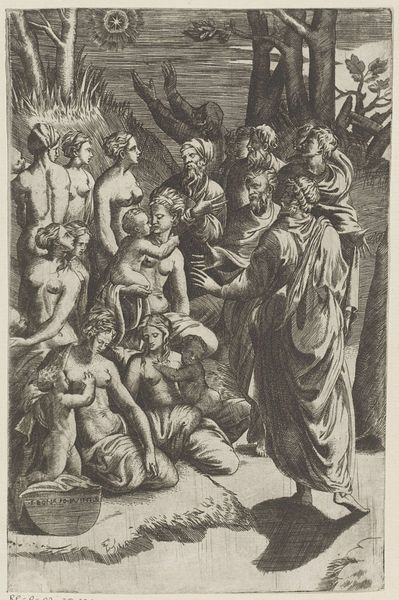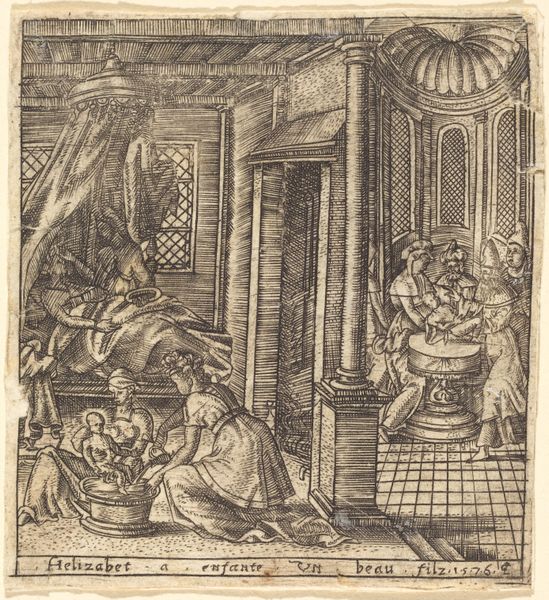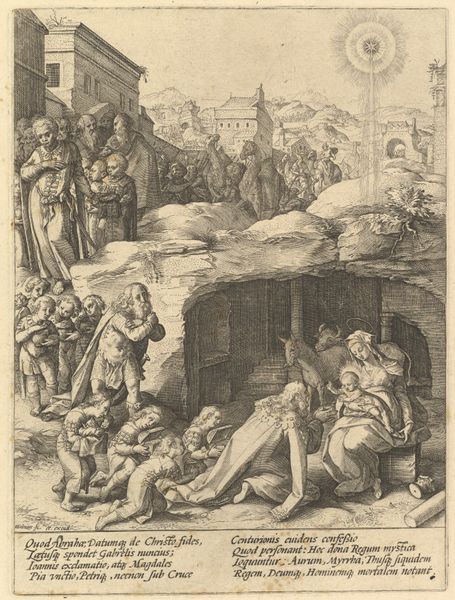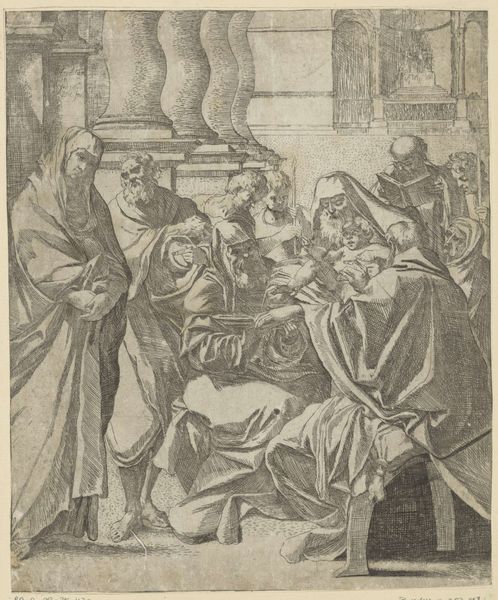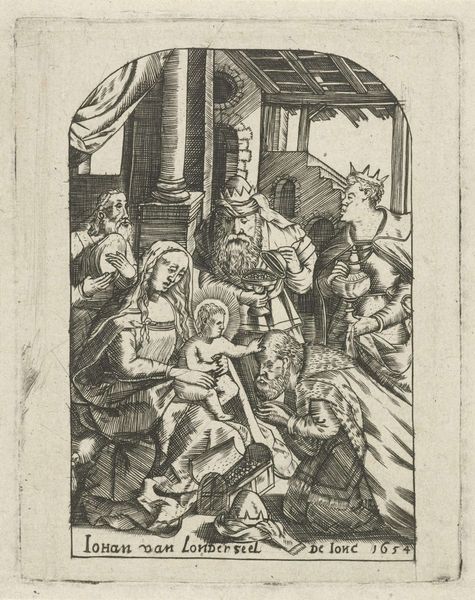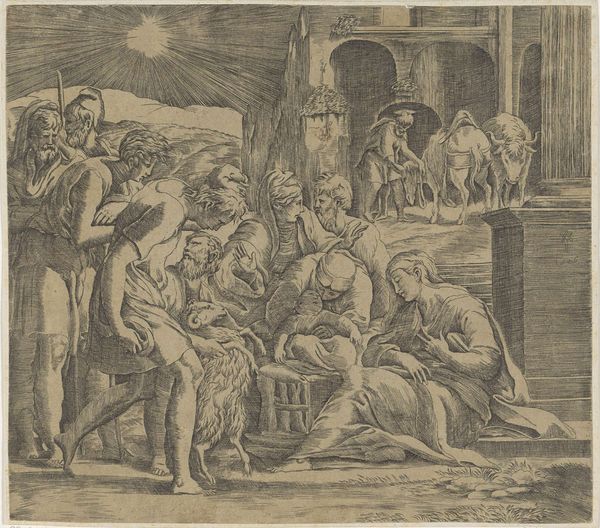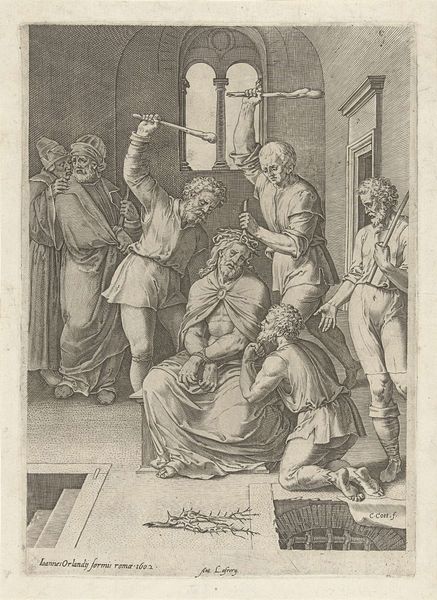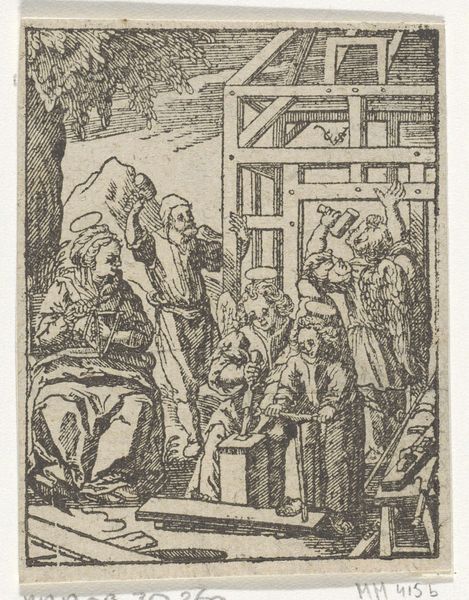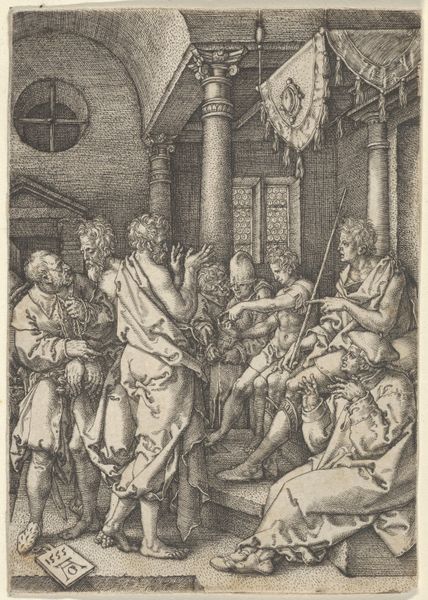
print, engraving
# print
#
figuration
#
pencil drawing
#
line
#
history-painting
#
engraving
Dimensions: height 83 mm, width 64 mm
Copyright: Rijks Museum: Open Domain
Editor: This is a photo reproduction of "Le Balai" or "The Broom," an engraving by Hieronymus Wierix, likely created before 1860. What strikes me is the image of labor, angels performing all these humble domestic tasks. What do you make of it? Curator: Well, immediately, I see the engraving technique. Consider the tools required: the burin, the metal plate. This wasn't a quick sketch; this was a deliberate act of production, requiring skill and time. These methods democratize image production, even those with divine themes are mediated through human industry. The creation, consumption, and wide distribution speak volumes about the socio-economic context. Editor: That's fascinating. I was thinking about the content as elevated, even divine, but you're grounding it in the labor of creating the image itself. Curator: Precisely! It's easy to get lost in the iconographic symbolism – the angels, their duties. But let's not forget the hands that etched those lines, the workshop where it happened, and the market for these reproducible images. Was it accessible to the working class, or meant for wealthy consumption? These details tell a deeper story. Look closely: the composition places domestic tasks with laboring bodies - blurring boundaries between high religious art and humble experience. Editor: So, even the act of viewing the art is another interaction in this cycle of consumption and labor. Curator: Indeed! Each print that was sold, displayed, and used helped build a market for reproductive printmaking of popular paintings. That image then perpetuates ideas about faith, and class in society. It makes you consider not just *what* is depicted but *how* and *why* such images were circulated so widely. Editor: It definitely provides a new way of considering not just art, but its function in society as well. Curator: Right. We shift our attention from idealized meaning to the tangible reality of its creation and impact.
Comments
No comments
Be the first to comment and join the conversation on the ultimate creative platform.
